
October is one of the best months for birds in Britain, so why, with three weeks of the month already passed, was my month’s list stuck on a mere 40 species? Simple answer: I had spent the first part of the month in Greece (see my last two posts), followed by a week volunteering at a tennis tournament (an ITF W100 event in case you’re interested) in Shrewsbury. Now Shrewsbury is in the middle of England, and though the town itself is charming, it’s not a great area for birds, so my days there did little to boost my month’s tally. Drastic action was required, so on the second to last Tuesday of the month I spent a day in Norfolk with my birding pal Andrew.
The weather forecast was good, the pressure high: we set off from home at 7.30 on a misty autumnal morning. Our first stop, at Lynford Arboretum, was a little disappointing as it failed to produce any of the hoped-for autumn migrants, such as Brambling, Siskin, Redwing and Fieldfare. However, we did see a useful 25 species, including several birds we weren’t to see later in the day, including Marsh Tit and Tufted Duck.
As we approached the Norfolk coast the mist became thicker, the air damper, prompting the car’s wipers to sweep the screen. It didn’t look promising, but fortunately the October sun still had sufficient warmth to burn the mist away, so by the time we had walked down to Titchwell beach the sun had broken through. Sea watching in Britain is often a chilly and wet affair: this was anything but, while a tide-beached log provided a decent seat. The high tide provided ideal viewing conditions.

Scoping the sea at Titchwell in perfect conditions. The beached log made a welcome seat
I was soon putting the little Swarovski scope to good use, finding numerous Great Crested Grebes on the sea, along with decent, if distant, views of a Red-throated Diver, always a satisfying bird to find. There were a few Common Scoters to be seen, too, while a tight flock of six Red-breasted Mergansers (all ducks, no drakes) flying past was a good find. Even better was a single Eider duck that also flew past, the first Eider of the year for both Andrew and me.

Pinkfeet over the sea
There was an impressive movement of hundreds of Pink-footed Geese, initially sighted far out to sea. At first we thought that they were Brent Geese – they were a very long way away – but as they came closer it was apparent that they were grey geese, not black. There were far to many of them to be Whitefronts, so they had to be Pinkfeet, with their identity confirmed eventually by their distinctive calls and their dark heads and necks. Many thousands of Pinks winter in North Norfolk, so seeing these geese wasn’t a surprise, but it was a pleasure.

Sanderling on the shore line
Add in a couple of horizon-skimming Gannets, and Sanderlings and Oystercatchers moving along the shore line, and it proved to be as productive an hour’s birding as one could hope for. We walked back, now in warm sunshine, past the RSPB’s fine Titchwell reserve. This is the most visited of all the RSPB’s 200 reserves, so we passed numerous other birdwatchers. We saw lots of birds, too: half a dozen Spoonbills, big flocks of Golden Plovers and Lapwings, a variety of wildfowl ranging from Dark-bellied Brent Geese to Gadwall and Shoveler, plus a pleasing number of small birds. These included Linnets and Skylarks, Reed Buntings and a single Stonechat, while we heard Cetti’s warblers, Bearded Tits and Water Rails. Our species total for Titchwell topped 60 quite comfortably
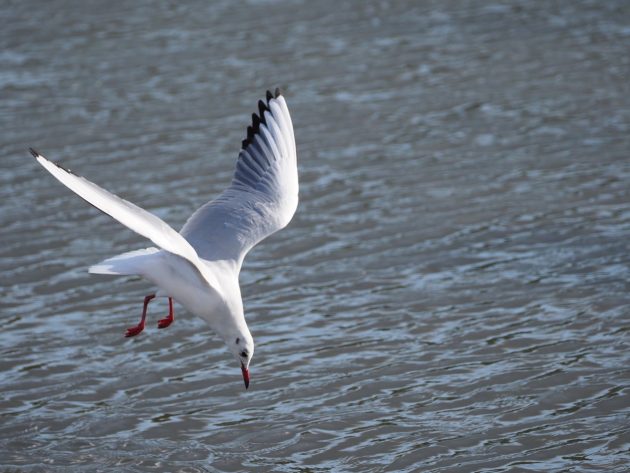
.A fishing Black-headed Gull at RSPB Titchwell

Dark-bellied Brent Geese at Titchwell

Lapwing
We ate our lunch in the car at Brancaster Staithe, an attractive small-boat harbour where birds are used to people, so generally easy to photograph. Turnstone and Redshank, Black-tailed Godwit and Brent Goose, all came with range of my camera, as did Herring and Black-headed gulls. At sites like this, a car makes a great mobile hide, though you have to be careful not to get stuck in the mud.

Dark-bellied Brent Goose
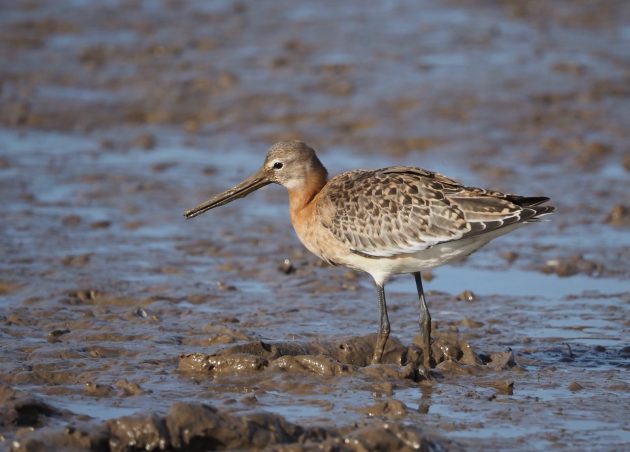
Black-tailed godwit, a migrant from Iceland

Redshank – its shanks (legs) really are bright orange, not red
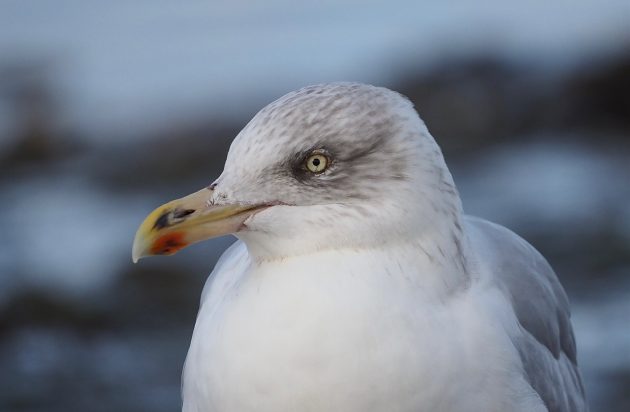
The evil eye – Herring gull
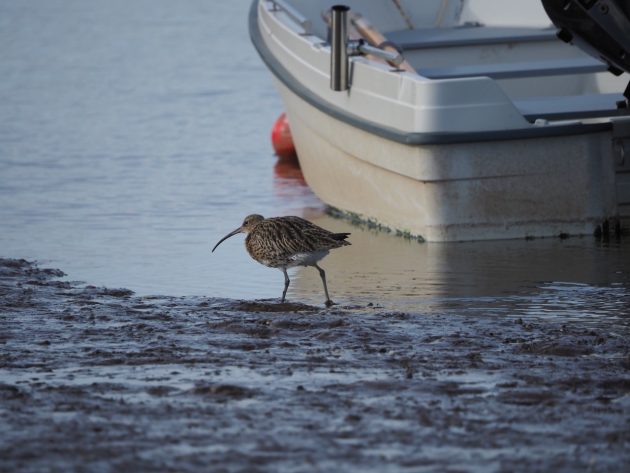
Curlew on the shore at Brancaster Staithe
From Brancaster we drove east along the coast, pausing at Lady Anne’s Drive at Holkham. Here there is a large and well-managed National Nature Reserve, and it’s always a great place to see birds, often at close range, though it gets progressively better for birds as the autumn gives way to winter. We didn’t stop long, but were pleased to see a trio of Cattle Egrets feeding with cattle – these egrets are recent colonists. A few Curlews were feeding here on the freshmarsh. I always enjoy seeing these big, handsome waders, and even managed a shot or two as individuals flew overhead. I also grabbed a shot of a passing Jay. Was it a fresh migrant from the Continent? Every autumn the east coast of England sees Jays arriving from across the North Sea, so this bird had most likely just arrived from Holland or Denmark.

A passing Jay at Holkham – a new arrival from the Continent?
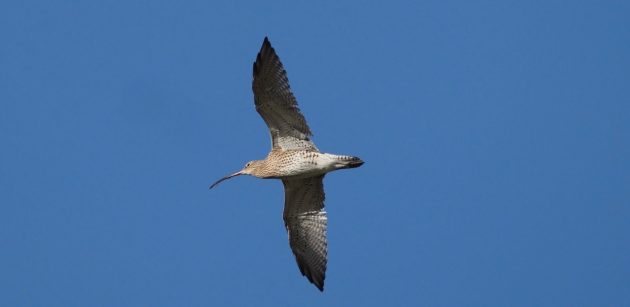
Curlew at Holkham
There are fine grazing meadows on either side of Lady Anne’s Drive, and here Egyptian and Canada Geese were grazing among the Greylags, with small parties of Pinkfeet rather more distant. The latter are wary birds, but they soon get used to people, so by December they often graze close to the road, unconcerned by the crowds of human visitors attracted to this popular holiday site.

Cattle Egrets are new colonists of North Norfolk
By now the sun was dropping, the shadows lengthening, so to make the most of the last of the afternoon’s light we drove east again to Cley Marshes, one of the oldest bird reserves in Britain, and one owned and managed by the Norfolk Wildlife Trust. We had a target bird here, a Long-billed Dowitcher. Now dowitchers may be common in North America, but in Britain they are rarities. Rumour had it that the bird was visible from Bishops’ Hide, so that’s where we went. With the sun behind us the light was perfect, and it didn’t take long to find our quarry, though it was fast asleep on a muddy island and identity could only be made by comparing its size to its companions – Black-tailed Godwits and Ruffs.
Eventually, however, our patience was rewarded and the bird woke up and started to feed in characteristic dowitcher manner, giving great views through the scope, though it was too distant to photograph. Incidentally, this individual is a returning rarity, for what is almost certainly the same bird was first recorded at Cley three years ago. It spends much of the year on the reserve, but disappears in the spring and summer, when presumably it migrates north in a lonely and most likely unsuccessful bid to find another of its own species. It’s a sad story, really, but this bird has given many birders a great deal of pleasure. It was the third time I’d seen it – the last occasion had been in July 2023, when it was still sporting its summer finery.
The dowitcher wasn’t quite the last bird of the day – that honour went to a pair of Stock Doves, feeding in a field which had recently held Stone Curlews. The doves were our 87th species, while for both Andrew and I the dowitcher was our 196th British species of the year. Just four to go for the double century. Watch this space.









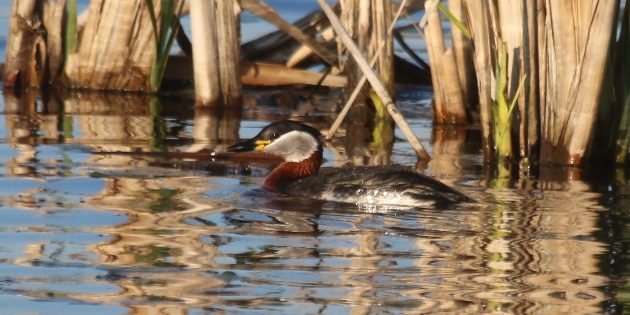



Ah David, my faith in you has been restored. The last two weeks with meagre results in Greece were utter misery, a Greek drama… and that lapwing is just delicious!
There are any number of potential lifers for me on your one-day list. And while that lapwing is delicious, aren’t they all?
Come and see them one day Paul: I would be delighted to show you!
I very well may, someday.
A thoroughly enjoyable day shared with you David. Great shots reminding me of the day.